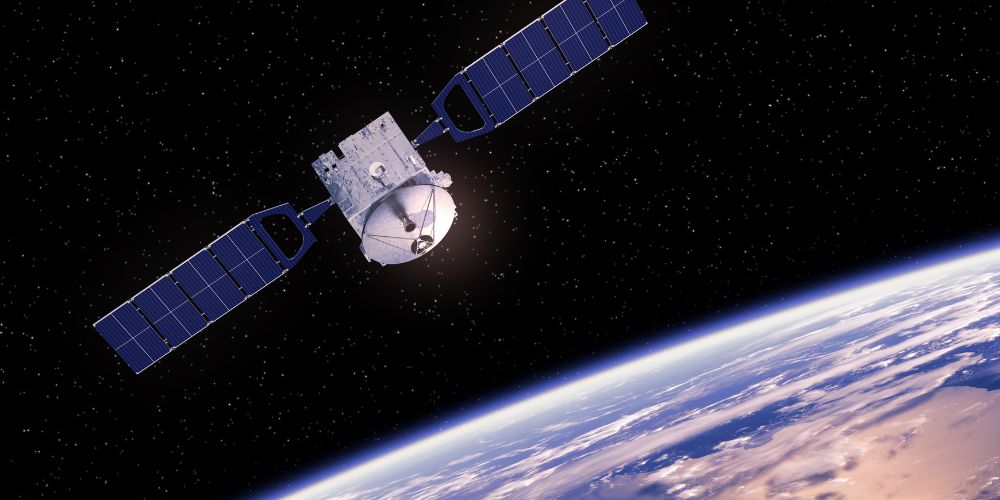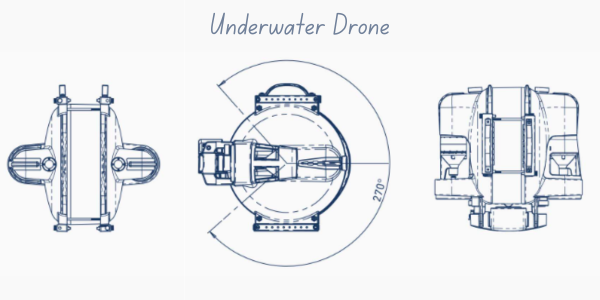
How Can Technology Help in Monitoring Ocean Health
Posted by Enrico Gennari on July 11, 2024
Ocean pollution has severely affected marine life, and according to Condor Ferries, almost 1,000 species of marine animals are impacted by ocean pollution.
Ocean pollution has severely affected marine life, and according to Condor Ferries, almost 1,000 species of marine animals are impacted by ocean pollution. Plastic pollution is a major contributor to this problem, and the amount of plastic in our oceans is steadily increasing.
Technology plays a crucial role in monitoring this concerning trend. Using tools like satellite remote sensing, scientists can track changes in ocean currents and identify areas with high concentrations of plastic debris. This information is vital for developing effective strategies to combat plastic pollution.
Considering the ever-changing climate, it is devastating to think of the future and how the severity will increase, critically damaging with every passing day. A study claims the warming is three times more extreme than in 1982.
The ocean absorbs heat about 90% of the extra heat from greenhouse gases. This warms the sea, harming the ecosystem and causing marine species to move to more excellent areas. It also affects coral reefs, leading to bleaching and death and causing oxygen levels to decline.
Given the state of the oceans, we must urgently find a way for marine conservation — (aka) ocean conservation, which is the practice of preservation of ocean ecosystems using planned management to protect marine resources.
At Oceans Research Institute, emerging technologies can catalyze better ocean conservation.
This blog post will discuss how technology can help monitor ocean health. Let’s dive right into it!
Satellite Remote Sensing

Satellite Remote Sensing—or remote sensing—refers to the process of detecting/monitoring the characteristics of an area by emitting radiation from a distance. For instance, a satellite shot allows you to see much more area than from a flat surface.
In other words, Greenly Earth smartly sums it up with a one-liner: “Any technological device that accumulates data from a distance could be considered a remote sensing device.”
Now, let's return to the topic and examine how this technology could help preserve marine life.
Firstly, this powerful technology can help us see and observe areas we would be unable to otherwise. As we know, the warmth of the atmosphere impacts sea levels by causing the polar ice caps to melt, which raises sea levels. Using remote sensing, we can monitor sea surface temperature changes over time. These data can be crucial for understanding climate change's impacts on the marine ecosystem.
Secondly, it can also be super helpful with chlorophyll, the pigment that gives plants the green color.
The chlorophyll absorbs sunlight at a specific wavelength. Utilizing the power of remote sensing, we can measure the sunlight reflecting on different wavelengths. Using this data, scientists can estimate the concentration of chlorophyll present within the plant cells.
Underwater Drones and ROVs
Coming up next, we have Remotely Operated Vehicles (ROVs) also known as underwater drones.
Early detection and tracking of marine species is essential for their preservation. Drones with high-quality cameras can assist with that as they can reach remote areas where it’s impossible or troublesome to achieve using traditional methods.

Source: https://www.deeptrekker.com/news/underwater-drone-101
Furthermore, underwater drones reduce wildlife disturbance. A tiny drone can attract less attention than a submarine or a diver. It can enable scientists to study the unique species in their habitual environment without stressing them out.
Moreover, mapping underwater has always been challenging for humans. Thanks to this groundbreaking technology, it is easier nowadays.
The Catlin Sea Survey used underwater drones to capture images of corals worldwide. By the end of the survey, the photos were stitched together, forming an unprecedented view of corals. The exercise helped scientists identify areas of degradation and changes over time.
Sensor Networks
As we discussed before, sensors are vital technology in ocean conservation. They enable scientists to have remote access to information about the water’s quality, salinity, temperature, and pH levels.
We can deploy these sensors across different ocean areas for real-time water monitoring, allowing marine scientists to observe ocean health with precise readings of water quality, salinity, temperature, and pH levels.
Big Data and AI
The emergence of artificial intelligence (AI) is also beneficial for marine conservation. Corporations and businesses are already using AI to sort and analyze data like underwater sensor readings, satellite imagery, and acoustic recordings of marine life, which can be critical to preserving marine life, resulting in a better understanding of ocean health.
AI could analyze satellite images of land areas, specifically coastlines and waterways, to choose areas that require extensive cleanup efforts. Later, we can implement safety precautions to prevent plastic from entering the oceans.
Additionally, AI can analyze satellite imagery and vessel tracking data to identify illegal fishing activities. This tracking can help patrol those areas better and prevent poachers from hunting endangered species.
Citizen Science and Mobile Apps
We can harness the public's knowledge to gather valid local data. Several mobile applications offer options for citizens to survey their wildlife-related experiences.
Citizen science can expose us to a vast landscape of data from around the globe, which scientists can only do with the public's help. Citizen science can also help collect frequent data, offering an excellent choice for studying the changes in a specific region over time.
Conclusion
Technology can be beneficial in marine conservation. With technology's help, we can learn more about our oceans and take safety precautions to protect ocean health.
Ocean sustainability impacts all of us. No matter where you live. It provides the air we breathe while absorbing 25% of all carbon emissions. Additionally, it regulates the temperature on Earth and makes it easier for us to live.
Furthermore, seeing how upcoming technologies can help ocean conservation is fascinating. However, note that the preservation of endangered species requires immediate action. Thus, we must come together before it is too late. Oceans Research Institute is a global player in this, with an absolute commitment to advanced technologies in monitoring and conserving marine environments. Oceans Research Institute's work toward ocean sustainability and conservation is critical in our struggle to preserve marine life for our succeeding generations.